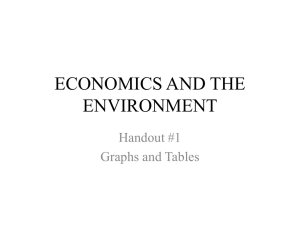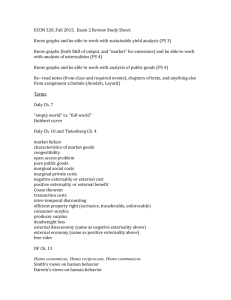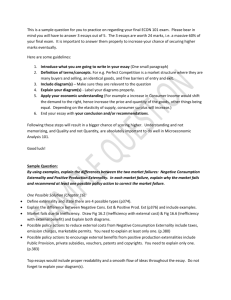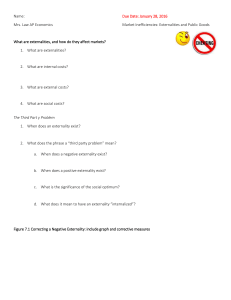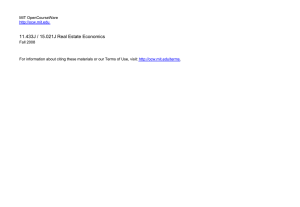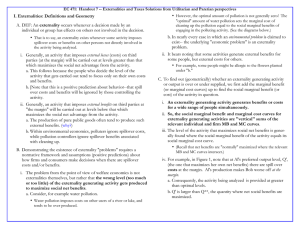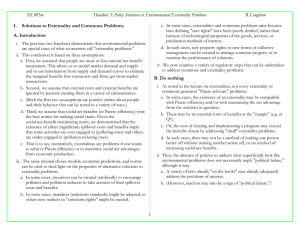Externalities Review Questions
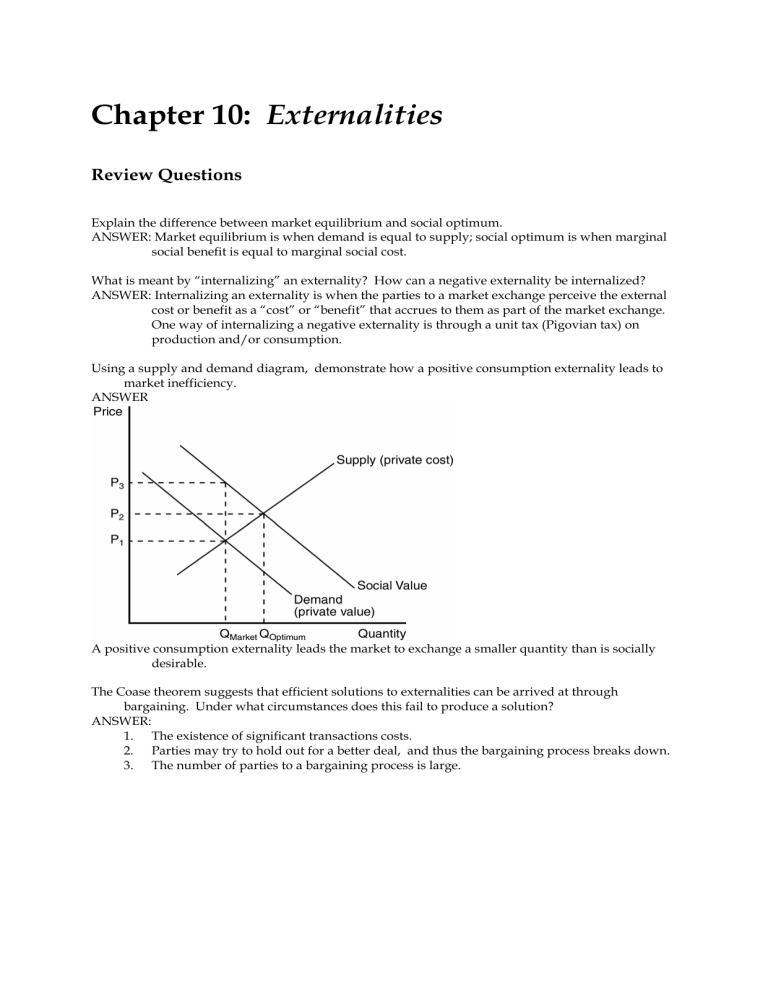
Chapter 10: Externalities
Review Questions
Explain the difference between market equilibrium and social optimum.
ANSWER: Market equilibrium is when demand is equal to supply; social optimum is when marginal social benefit is equal to marginal social cost.
What is meant by “internalizing” an externality? How can a negative externality be internalized?
ANSWER: Internalizing an externality is when the parties to a market exchange perceive the external cost or benefit as a “cost” or “benefit” that accrues to them as part of the market exchange.
One way of internalizing a negative externality is through a unit tax (Pigovian tax) on production and/or consumption.
Using a supply and demand diagram, demonstrate how a positive consumption externality leads to market inefficiency.
ANSWER
A positive consumption externality leads the market to exchange a smaller quantity than is socially desirable.
The Coase theorem suggests that efficient solutions to externalities can be arrived at through bargaining. Under what circumstances does this fail to produce a solution?
ANSWER:
1. The existence of significant transactions costs.
2. Parties may try to hold out for a better deal, and thus the bargaining process breaks down.
3. The number of parties to a bargaining process is large.
To produce honey, beekeepers place hives of bees in the fields of farmers. As bees gather nectar, they pollinate the crops in the fields increasing the yields of these fields at no additional cost to the farmer. What might be a reasonable private solution to this externality and how might the solution be reached.
ANSWER: One solution would be to have the farmer also own the beehives. This internalizes the externality. Another solution would be to have the farmer compensate the owner of the beehives for the value of the pollination. On the other hand, the owner of the beehives prospers by locating his hives next to the farmer’s fields. She should be willing to compensate the farmer for this benefit.
Why are public policy solutions such as Pigovian taxes and subsidies preferred over regulatory policies?
ANSWER: The preference of Pigovian taxes and subsidies is based on the ability of markets to signal optimal resource allocations.
2

